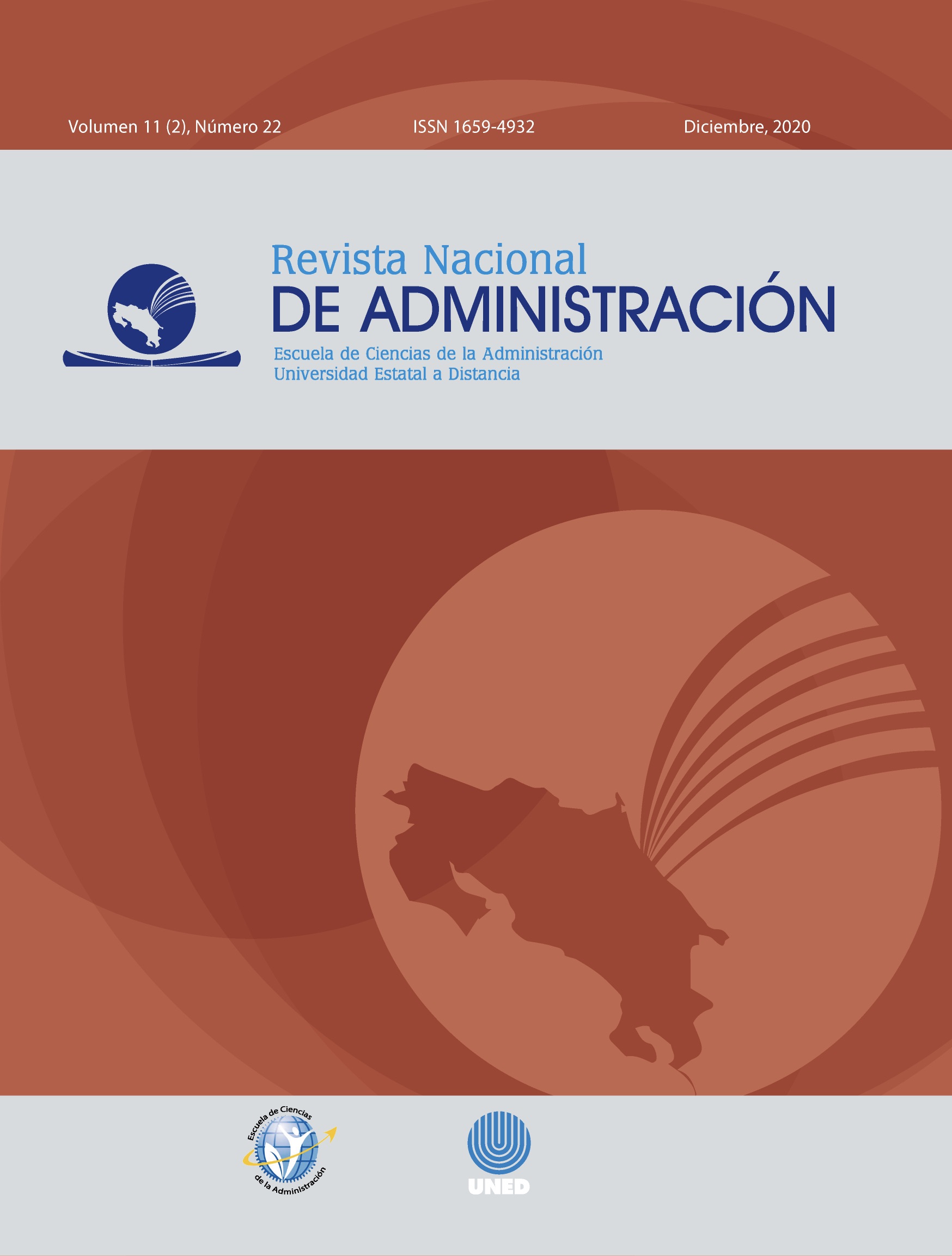Benefit valuation for a Cost-Benefit Analysis in the context of developing nations
DOI:
https://doi.org/10.22458/rna.v11i2.3219Palabras clave:
Políticas públicas, políticas de infraestructura, naciones en desarrolloResumen
Los Análisis de Coste-Beneficio pueden constituir herramientas útiles para la valoración de proyectos y políticas de infraestructura. La literatura y los documentos de orientación sobre la aplicación de la metodología ACB son extensos. Además, la gran mayoría de esta literatura está centrada en aplicaciones en países de ingresos altos y medio altos (naciones desarrolladas). Este ensayo se suma a dicha literatura al examinar los problemas relacionados con emprender un ejercicio de evaluación de beneficios, como parte de un ACB, en el contexto de naciones en desarrollo. Ofrece una visión de las diferentes metodologías para valorar los beneficios y proporciona una orientación sobre algunos de los problemas que pueden surgir al momento de implementar esas metodologías en una nación en desarrollo. Este ensayo también ofrece una orientación general para asegurar que un ejercicio de evaluación de beneficios provea una herramienta útil para valorar un proyecto en el contexto de una nación en desarrollo.
Citas
Abelson P. Project appraisal and valuation of the environment: general principles and six case-studies in developing countries.: Springer; 1996.
Caroline D, Dinwiddy CL, Teal FJ. Principles of cost-benefit analysis for developing countries.: Cambridge University Press; 1996.
Champ PA, Boyle KJ, Brown TC, Peterson LG. A primer on nonmarket valuation.: Springer; 2003.
Diamond PA, Hausman JA. Contingent valuation: is some number better than no number? Journal of economic perspectives 1994;8(4):45-64.
Dickie M. Averting behavior methods. A Primer on Nonmarket Valuation: Springer; 2017. p. 293-346.
Freeman III AM, Herriges JA, Kling CL. The measurement of environmental and resource values: theory and methods.: Routledge; 2014.
Gollier C. Pricing the planet's future: the economics of discounting in an uncertain world.: Princeton University Press; 2013.
Hanley N, Spash C. Cost benefit analysis and the environment. 1996.
Hanley N, Mourato S, Wright RE. Choice modelling approaches: a superior alternative for environmental valuatioin? Journal of economic surveys 2001;15(3):435-462.
Hanley N. Are there environmental limits to cost benefit analysis? Environmental and Resource Economics 1992;2(1):33-59.
Hanemann WM. The economic theory of WTP and WTA. Valuing environmental preferences: Theory and practice of the contingent valuation method in the US, EU, and developing countries 1999:42-96.
Hausman J. Contingent valuation: from dubious to hopeless. Journal of Economic Perspectives 2012;26(4):43-56.
Hamilton K, Clemens M. Genuine savings rates in developing countries. The World Bank Economic Review 1999;13(2):333-356
Hicks JR. The four consumer's surpluses. The review of economic studies 1943;11(1):31-41.
Hoyos D. The state of the art of environmental valuation with discrete choice experiments. Ecol Econ 2010;69(8):1595-1603.
Johnston RJ, Boyle KJ, Adamowicz W, Bennett J, Brouwer R, Cameron TA, et al. Contemporary guidance for stated preference studies. Journal of the Association of Environmental and Resource Economists 2017;4(2):319-405.
Layard PRG. Cost-benefit analysis.: Cambridge University Press; 1994.
Ray A. Cost-benefit analysis: Issues and methodologies.: The World Bank; 1990.
Rosen S. Hedonic prices and implicit markets: product differentiation in pure competition. Journal of political economy 1974;82(1):34-55.
Rolfe J. Theoretical issues in using choice modelling data for benefit transfer. Choice modelling and the transfer of environmental values 2006; 1:28-51.
Rolfe J, Windle J, Bennett J. Benefit transfer: insights from choice experiments. Benefit Transfer of Environmental and Resource Values: Springer; 2015. p. 191-208.
Sartori D, Catalano G, Genco M, Pancotti C, Sirtori E, Vignetti S, et al. Guide to cost-benefit analysis of investment projects. Economic appraisal tool for Cohesion Policy 2014;2020.
Pearce D, Pearce C, Palmer C. Valuing the environment in developing countries: case studies.: Edward Elgar Publishing; 2002.
Pearce D, Atkinson G, Mourato S, Carson R Cost-benefit analysis and the environment: recent developments.: Organization for Economic Co-operation and development; 2006. Contingent valuation: a comprehensive bibliography and history.: Edward Elgar Publishing; 2012.
Quah E. Cost-Benefit Analysis in Developing Countries. The Globalization of Cost-Benefit Analysis in Environmental Policy 2013:19.
Warner AM. Cost-benefit analysis in World Bank projects 2010.
World Bank. Willingness to pay for reduced morbidity. Unpublished manuscript prepared for the workshop,“Economic valuation of health for environmental policy: assessing alternative approaches; 2002.
Whittington D. What have we learned from 20 years of stated preference research in less-developed countries? Annu. Rev. Resour. Econ. 2010;2(1):209-236.
Publicado
Cómo citar
Número
Sección
Categorías
Licencia
Aquellos autores/as que tengan publicaciones con esta revista, aceptan los términos siguientes:
- Los autores/as conservarán sus derechos de autor y garantizarán a la revista el derecho de primera publicación de su obra, el cuál estará simultáneamente sujeto a la Licencia de reconocimiento de Creative Commons que permite a terceros compartir la obra siempre que se indique su autor y su primera publicación esta revista.
- Los autores/as podrán adoptar otros acuerdos de licencia no exclusiva de distribución de la versión de la obra publicada (p. ej.: depositarla en un archivo telemático institucional o publicarla en un volumen monográfico) siempre que se indique la publicación inicial en esta revista.
- Se permite y recomienda a los autores/as difundir su obra publicada en la revista a través de Internet (p. ej.: en archivos telemáticos institucionales o en su página web).

